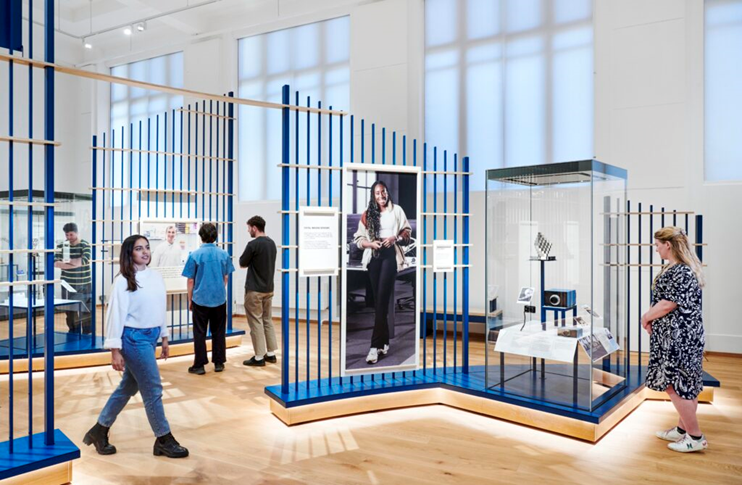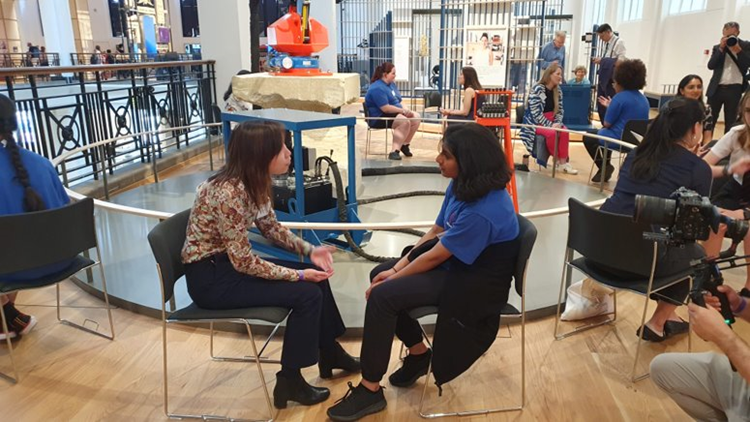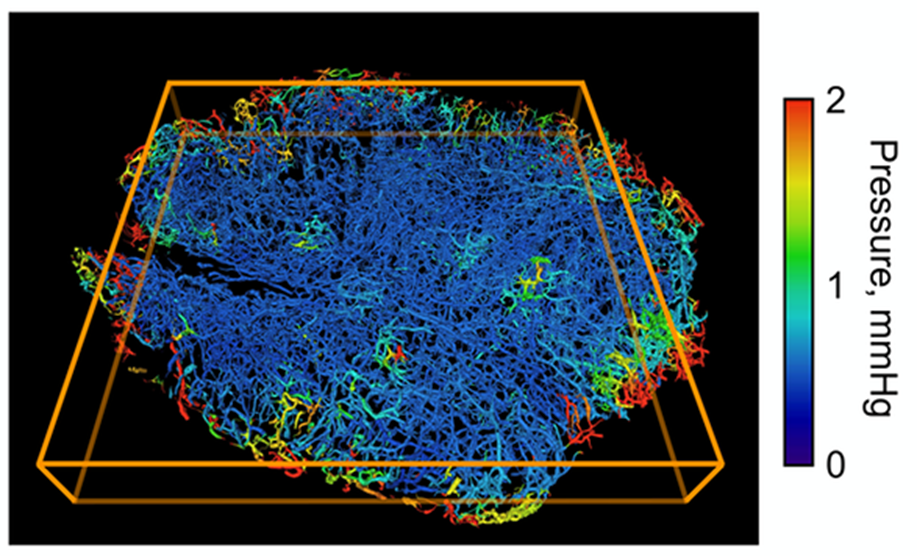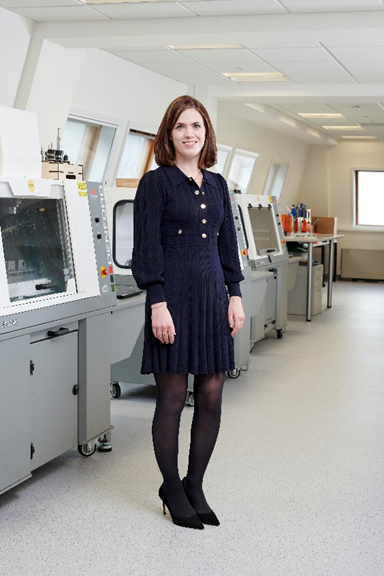Science Museum’s Engineers Gallery Celebrates Diversity in Creativity and inspires a next generation.
This is a guest post by Chris Hayhurst, Senior Consulting Manager EMEA & APAC, MathWorks
In museums around the world, thousands of interesting objects and artifacts spark interest in millions of people every year. But many young people aren’t inspired by those objects to see themselves as a future engineer or scientist. So it is really exciting that MathWorks has supported the creation of a new gallery, Engineers, in the Science Museum in London that has people as the core focus.
The gallery shows engineers working in a broad range of industries, such as farming, fashion, robotics and medicine. It shines a light on their lives, motivations, the engineering process that they follow, and what they do day-to-day.
MathWorks mission statement is to accelerate the pace of engineering and science and help people to do their best work. The Engineers gallery tells stories of how a collection of featured engineers got to the point that they did in their career and how they have been successful in their work. The video stories in the gallery also introduce the engineering process that the engineers have followed and the tools they have used in their work. Many of the engineers have been enabled to succeed by using MATLAB in their work.

Visitors browsing new gallery, Engineers, at the Science Museum (Image Credit: Science Museum Group).
These people, and some objects that help to tell their stories, are divided into four distinct sections:
Bodies looks at how engineers are vital to our health and wellbeing and showcases innovations developed to deliver precision treatments to people who need them most.
In Lives, LED lighting and digital imaging sensors illustrate how engineers have transformed how we light and interpret our world ever more successfully and sustainably.
In Connections, GPS, internet and web technologies represent engineering as a connected practice and shows how engineers enable the networks humanity relies on to thrive.
And the section on Creating reveals how engineers creative ways of thinking are central to developing amazing innovations which can change the world.
The gallery opened to the public on International Women in Engineering Day on Friday 23 June to spotlight the longstanding inequality in the number of young women being accepted onto university engineering degrees and in the UK engineering workforce.
One of the first events to be held in the new gallery was a mentoring session for female school students. They had the opportunity to meet with a selection of female engineers, including Janet McMillan from MathWorks, to get advice on how to take their next steps towards a career in engineering.

Speed mentoring session at the Engineers gallery, International Women in Engineering Day #INWED23
It is wonderful to show how diverse engineers can be, and two thirds of the featured engineers on The Engineers gallery are women. I had the opportunity to meet a number of them in person at the opening, and I was really excited to talk to them about their journeys in engineering and how they've used our tools.
One of them was Dr Rebecca Shipley, Professor of Healthcare Engineering at UCL. She has been working for a long time on modelling of fluid and drug transport in vascular cancer tumours. This has involved mapping out every blood vessel and capillary throughout a tumour and then modelling, with MATLAB, how the blood flows through these capillaries so that we can better understand how and where drugs and other treatments get delivered to the tumour. The team were able to create a novel computational framework which incorporates whole, realistic tumours extracted ex vivo to efficiently simulate vascular blood flow and interstitial fluid transport in silico for validation against in vivo biomedical imaging. An outcome of the work suggested a more effective means to increase interstitial perfusion within tumours.

Cross-sectional slice from the core of the GL261 tumour
Modelling the transport of fluid through heterogeneous, whole tumours in silico
Paul W. Sweeney, Angela d’Esposito, Simon Walker-Samuel, Rebecca J. Shipley
PLOS Computational Biology; 2019. 15(6): e1006751.
“Engineers are problem solvers, using physics, maths, chemistry and biology as tools to describe the world around us”, said Dr Shipley at the Engineers Gallery opening, “but to do that you need scientific computing. You need to go from the mathematical descriptions of the physics, biology and code that up so you can run simulations to understand what’s happening. Tools like MATLAB are exactly the kind of tools we use to enable that transition.”

Professor Rebecca Shipley (image courtesy, Science MuseumGroup)
It is my hope that thousands of young people recognise someone just like themselves in one of these diverse, creative and brilliant role models when they visit the Engineers gallery. Perhaps when they have been inspired to follow the engineering process and use scientific computing tools to do their work, they too will be recognised for amazing achievements in the years to come and in turn inspire the next generation of engineers.









コメント
コメントを残すには、ここ をクリックして MathWorks アカウントにサインインするか新しい MathWorks アカウントを作成します。